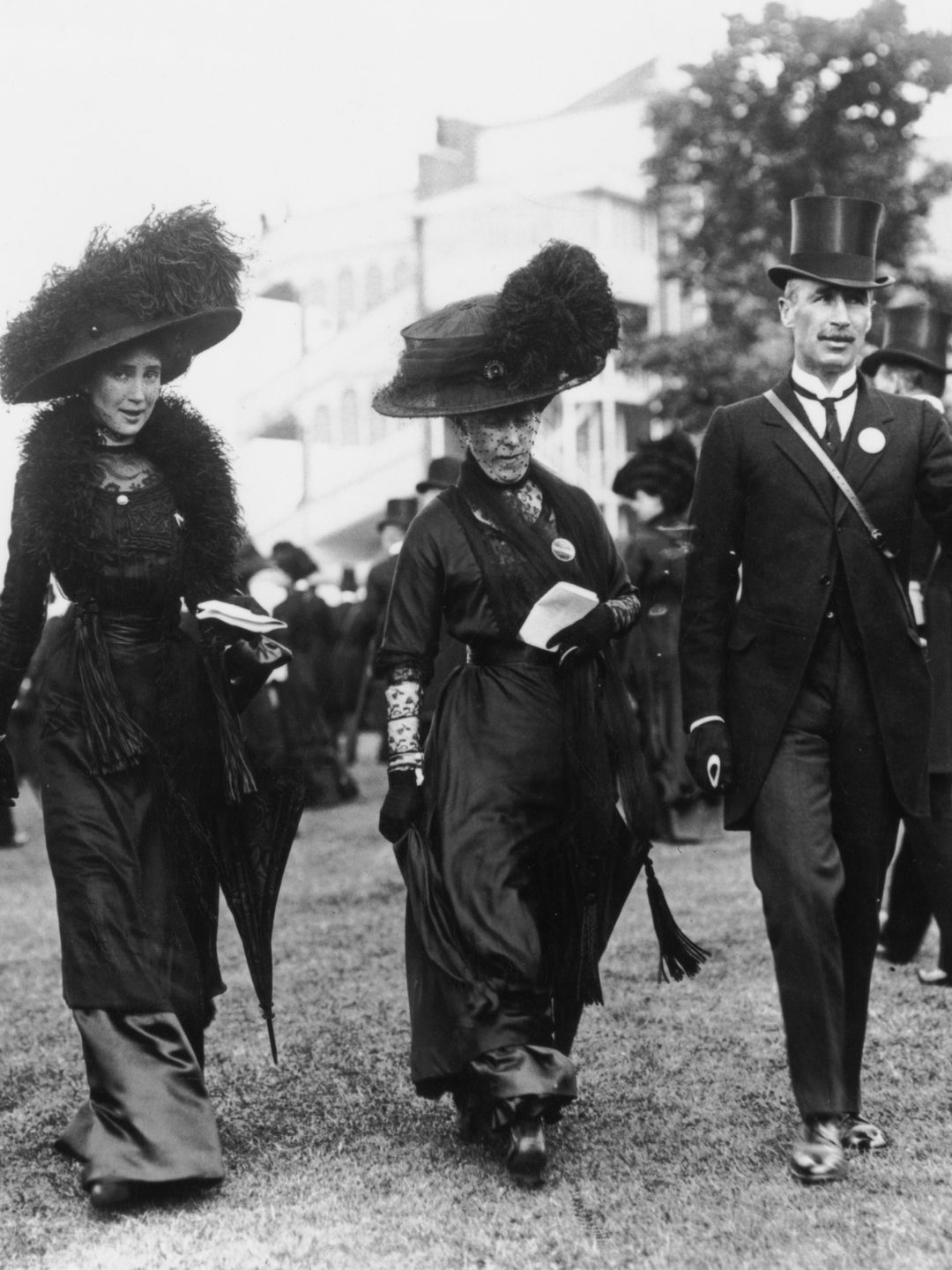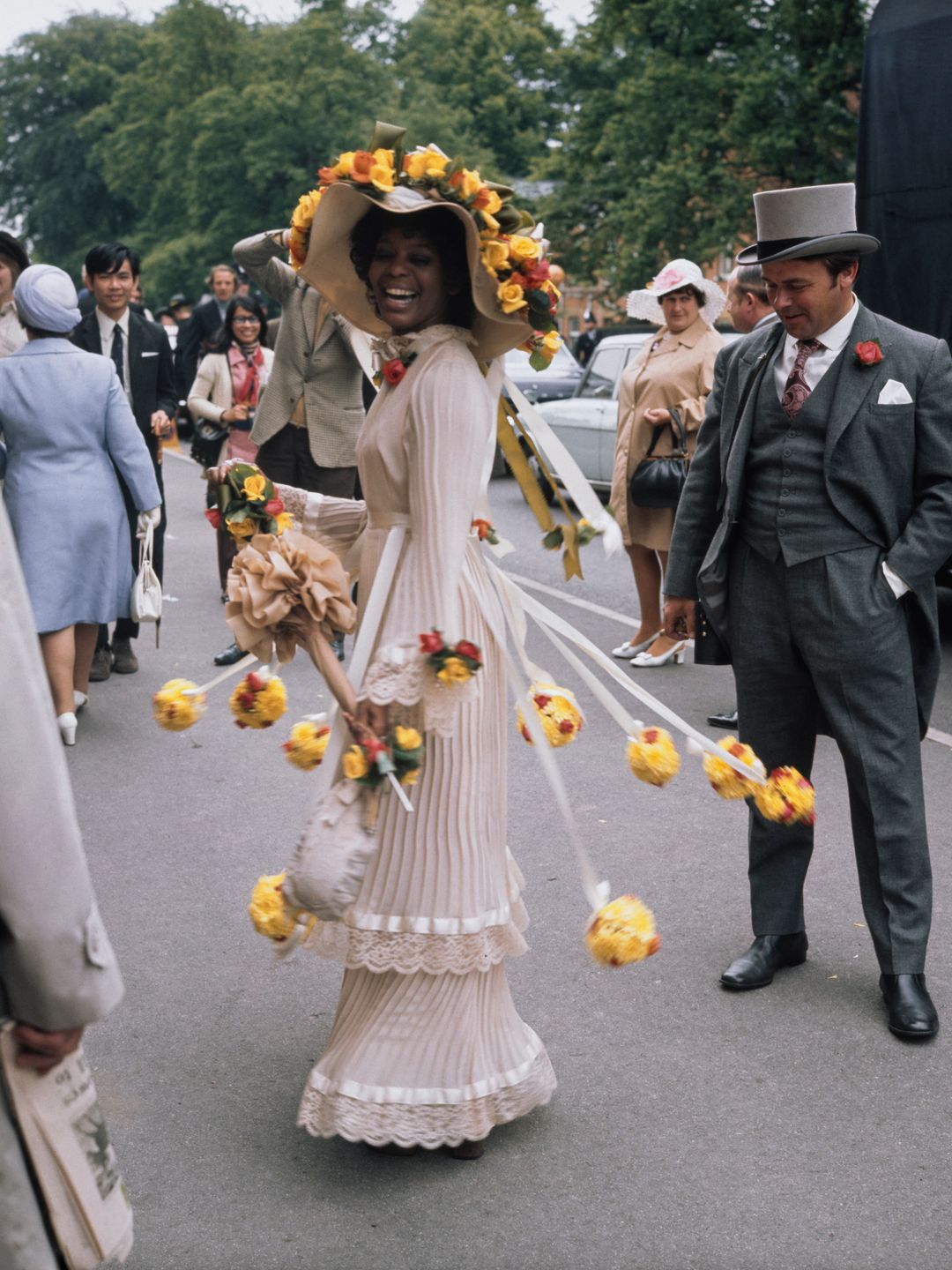While the Royal Ascot dress code has maintained its strict standards since the first official event over a century ago, women’s fashion at this prestigious racing occasion is clearly evolving into a fresh, modern chapter.
Despite the seemingly rigid rules, Ascot style has always adapted with the times. Looking ahead to 2025, there’s a noticeable rise in women opting for tailored suits and embracing sustainable choices, with an increasing emphasis on experimenting with pre-loved and vintage pieces.
Demonstrating a commitment to staying current, Ascot’s official 'Style Guide' was rebranded as the 'Royal Ascot Lookbook' in 2023. This refreshed guide featured six distinct fashion categories: Luxe, Tailoring, Pre-Loved & Rental, Vintage, High Street, and Emerging Designers. Then, in 2024, Ascot unveiled its inaugural 'Fashion Bible,' curated by celebrated British designer Daniel Fletcher. As the event’s first-ever creative director in its more than 300-year history, Fletcher aims to champion bold new styles, innovative sourcing, and a more mindful approach to dressing at this prestigious occasion.
Throughout its storied history, guests at Ascot have continuously pushed style boundaries — from the pearls of the 1920s, to the pared-back fashions of the 1940s shaped by wartime fabric rationing, to the vibrant colours of the swinging 1960s. The 1970s brought an elegant interpretation of the boho movement, while a landmark moment came in 2017, when Savile Row tailor Daisy Knatchbull became the first woman known to wear a morning suit at the races. Reflecting on these varied sartorial expressions across the decades is a favourite pastime for fashion enthusiasts and a testament to Ascot’s ever-evolving style legacy.
Scroll on to find out more about Ascot Fashion throughout the years...
The History of Ascot Fashion:
Ascot Fashion: 1700's - 1800's
"Though the first races were held in Ascot in 1711, it wasn’t until 1807 that a dress code was first implemented by Beau Brummell, a close friend of future King George IV, who decided that men were required to wear black coats with white cravats and pantaloons," explains Compton House of Fashion. Women were allowed to dress more freely until Queen Victoria made hats the norm after wearing a porter bonnet (a headpiece that shielded the face from observers) to Ascot in the 1830s.
Ascot Fashion: 1900s
The S-bend corset was fashionable during the 1900s. "It thrust the hips backwards and forced the chest forward into a fashionable pouter-pigeon shape," explains the V&A. This silhouette was "emphasised with puffed, frilly blouses that were often embellished with decorations like lace collars and broad ribbon ties. Separates were popular, with skirts fitted over the hip and fluted towards the hem."
Ascot Fashion: 1910s
Such was the Royal Family’s influence over Ascot that, when they went into mourning for King Edward VII in 1910, all guests adhered to tradition and dressed entirely in black, transforming the usually colourful event into a striking display of collective respect and solemn elegance.
Ascot Fashion: 1920s
In 1922, The Times famously proclaimed that the Royal Ascot races were 'the best place in England to see beautiful women wearing beautiful clothes.' Much of the fashion at Ascot during the 1920s mirrored the era’s iconic flapper style. While shapewear was still worn, restrictive full corsets were falling out of favour, giving way to shorter hemlines and more liberating silhouettes. Coco Chanel played a pivotal role in popularising many of these timeless looks, from the chic flapper dress to her signature love of pearls. For Ascot, these elegant strands were often paired with luxurious fur stoles and accessories, adding an extra layer of opulence to the glamour of the day."
Ascot Fashion: 1930s
The drop-waist androgyny of the previous decade gave way to a slinky femininity in the 1930s. "Parisian couturiers introduced the bias-cut into their designs, which caused the fabric to skim over the body's curves," explains the V&A. At Ascot, long, simple, and clinging evening gowns made of satin became the height of elegance, perfectly showcasing this new, softly sensual silhouette.
Ascot Fashion: 1940s
As a result of the WW2 there were severe fabric shortages, which lasted until the end of the decade. Skirts were a little below the knee and straight, worn with boxy jackets and broad, padded shoulders. From 1942 onwards, clothes were made under the government Utility Scheme that rationed materials. During the war, accessories were important because of their relative affordability; tall platform shoes or sandals, and tall floral hats were fashionable.
Ascot Fashion: 1950s
During the 1950s, dresses with pencil or full skirts, as well as separate,s were popular at Ascot. Hats were either small pill-box styles or large-brimmed, saucer-like hats.
Ascot Fashion: 1960s
The 'swinging 60s' was an epic era for Ascot Fashion. Wages were the highest they had been since the war, fitted undergarments like girdles were a thing of the past, and Ascot's dress code became ever more relaxed.
Ascot Fashion: 1970s
Women’s fashion at the races has always evolved with the times, and by the 1970s, Ascot style was no exception. Fashion at the event embraced the decade’s love for funky patterns, theatrical flourishes, and flamboyant outfits, reflecting the free-spirited energy and bold experimentation that defined the era.
Ascot Fashion: 1980s
The 1980s were all about statement accessories, a trend that found its way to Royal Ascot through bold and eye-catching headpieces. Neon, a defining feature of the decade, also made an appearance - guests gave this vibrant palette a sophisticated twist by choosing bright, dress-code-friendly outfits in striking hues. Princess Diana’s impeccable Ascot looks set the tone for the era, inspiring a new standard of chic and playful elegance at the races.
Ascot Fashion: 1990s
In contrast to the bold excess of the 1980s, the 1990s ushered in a new era of minimalism, championed by iconic designers like Calvin Klein - a pared-back aesthetic that remains influential today. Ascot fashion followed suit, with racegoers favouring sleek, streamlined dresses, loose flowing fabrics, and elegant slip dresses that captured the understated sophistication of the decade.
Ascot Fashion: 2000s
The Y2K era ushered in a spirit of bold experimentation at Ascot, with statement hats becoming an essential part of the race-day ensemble. Gone were the days of subtlety - the addition of bright, vibrant colours dominated the scene, reflecting the decade’s love for eye-catching, playful fashion. From oversized fascinators to intricately designed headpieces and interesting dresses, guests embraced a fearless approach to accessorising, perfectly capturing the youthful energy and futuristic optimism that defined the early 2000s.
Ascot Fashion: 2010s
In 2012, organisers of the event released a 'Formal Style Guide' for racegoers for the first time. For women, the rules include that women’s hemlines must fall just above the knee or lower and that straps on dresses and tops must be at least one inch wide. In 2017, jumpsuits were formally allowed into the dress code. More and more women have worn suits to Royal Ascot in the 21st century, pushing the boundaries of the event's strict clothing rules.
Ascot Fashion: 2020s
In the 2020s, many guests still favour traditional elegance, but silhouettes have become more slender and headpieces more refined. The Royal Enclosure dress code continues to uphold high standards: ladies must wear a hat or headpiece with a solid base of at least four inches in diameter, and novelty hats, excessively oversized designs, or any headwear promoting a product or brand are strictly 'not permitted.'
In 2024, Royal Ascot made fashion history by launching its first-ever 'fashion bible', curated by Daniel Fletcher. This groundbreaking lookbook marks a new milestone for the iconic event, aiming to elevate and unify its style identity. Designed to inspire attendees across all enclosures, the guide showcases Fletcher’s signature sharp tailoring and structured designs, alongside specially curated edits, including a sustainable section featuring contributions from industry luminaries such as Stella McCartney and Vivienne Westwood.























